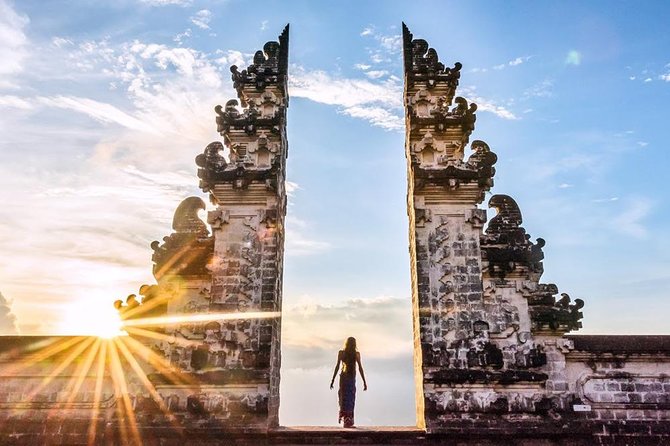Java Trip Overview
Cycling tours are favored by tourists. Getting around the village of the Sambisari & Kedulan Temple is the most popular.
Walk around the village accompanied by English-speaking local guides through rice fields, farms and local people. Cycling tours are carried out far from the city and there are still many locals who are active in rice fields, and pristine nature. In addition to farming in the fields, residents make various traditional foods and crafts.
Additional Info
Duration: 5 hours
Starts: Java, Indonesia
Trip Category: Cultural & Theme Tours >> Historical & Heritage Tours
Explore Java Promoted Experiences
What to Expect When Visiting Java, , Indonesia
Cycling tours are favored by tourists. Getting around the village of the Sambisari & Kedulan Temple is the most popular.
Walk around the village accompanied by English-speaking local guides through rice fields, farms and local people. Cycling tours are carried out far from the city and there are still many locals who are active in rice fields, and pristine nature. In addition to farming in the fields, residents make various traditional foods and crafts.
Stop At: The Sambisari Temple, Purwomartani Village Kalasan, 52281 Indonesia
Sambisari is a 9th-century Hindu temple located at Sambisari hamlet, Purwomartani village, Kalasan, Sleman regency, Yogyakarta, Indonesia. The temple was buried about five metres underground. Parts of the original temple have been excavated
Based on architectural and ornamental similarities to another Hindu temple in Indonesia, Prambanan, the presence of Hindu statues around the temple walls, and the lingga-yoni inside the main temple, historians have concluded that Sambisari was a Shivaite Hindu temple built around the first or second decade of the 9th century (circa 812-838). This conclusion was supported by the findings of a gold plate in the vicinity engraved with letters that according to paleography were used in early 9th century ancient Java.
According to Wanua Tengah inscription III dated 908 that contains the name of kings that ruled Mataram Kingdom, the temple was probably built during the reign of Rakai Garung (ruled 828-846). However, historians also consider that the construction of a temple was not always issued by a king. Lesser nobles might have also ordered and funded the construction.
Duration: 30 minutes
Stop At: Kedulan, Tirtomartani, Kec. Kalasan, Kabupaten Sleman, Daerah Istimewa Yogyakarta, Indonesia
Kedulan temple is a ruin of 9th-century Hindu candi located not far from Sambisari temple. The temple is located in Tirtomartani village, Kalasan subdistrict, Sleman Regency, Yogyakarta, Indonesia. The style and architecture bears striking similarities with nearby Sambisari temple. And just like Sambisari, the temple compound is buried around 6 metres below the present surface, as the result of lahar flow of the past eruption of Mount Merapi in the north.
The temple complex took form as a compound enclosed in stone walls, with parts are still buried underground. Within the enclosure, there are four temples; one main temple facing east, and three smaller ancillary temples (candi perwara) in front of main temple on eastern side in row north to south. The style and layout is quite similar to Sambiari temple, however Sambisari temple is facing west, and located around 2.5 kilometres to the southwest
The main temple was accidentally discovered in 24 November 1993, when a group of volcanic sand miners quarried the land. The land was communally owned by village. Subsequently, archaeological excavation were commenced, led by BP3 Yogyakarta. After digging 6 to 7 metres deep, the ruins of temple main building were uncovered. The temple floor plan is a square measuring 13.7 metres on each sides, and the height of main building is 8.009 metres tall. Currently, the temple is in disrepair; some parts are still buried and some stones are missing.
As for 2017, the archaeological study and reconstruction project is currently on progress. By early 2018, the temple reconstruction phase entered anastylosis phase. The restoration of the entire Kedulan Temple complex is expected to be completed by the end of 2018
Duration: 40 minutes





